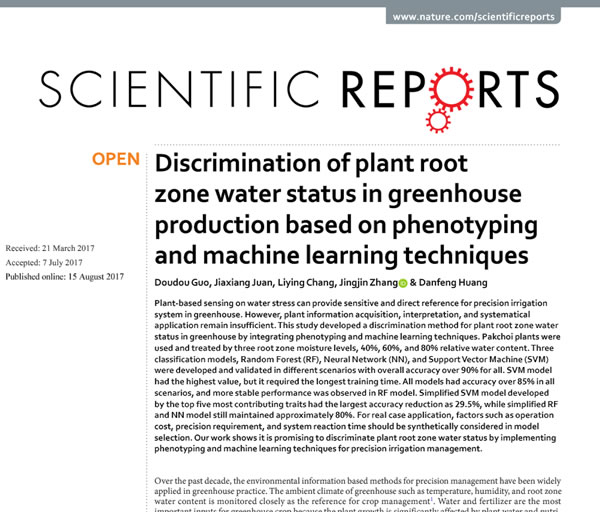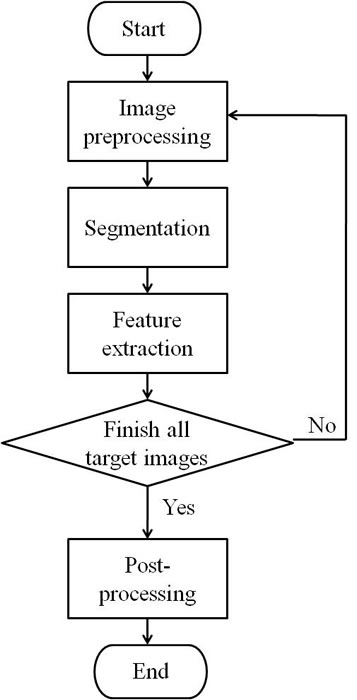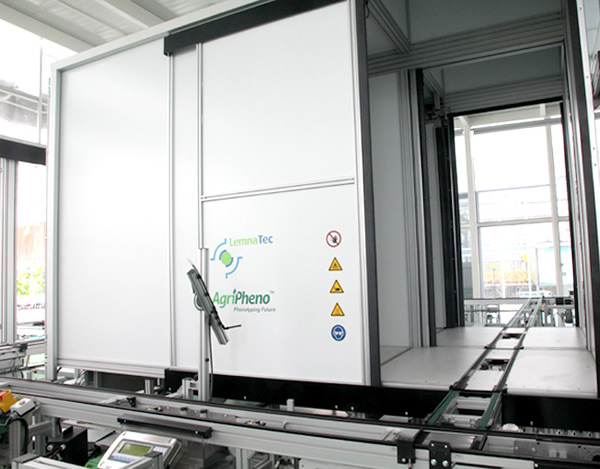In August 2017, the research group of Shanghai Jiao Tong University professor Huang Danfeng Reports published in Scientific combined with phenotypic techniques and machine learning, build on the state of water in Greenhouse of cabbage root zone model and verification of research articles: Discrimination of plant root zone water status in greenhouse production based on phenotyping and machine learning techniques. The greenhouse phenotype Greenhouse scanalyzer systems, a AgriPheno platform, supports this study.

As we all know, plant perception of water stress can provide sensitive and direct reference for greenhouse precision irrigation system. However, the acquisition, interpretation and systematic application of plant information are still insufficient. Through the integration of phenotype and machine learning techniques, Professor Huang Danfeng's research team developed a method to identify the root water status of greenhouse plants. They treated pakchoi with different gradients of relative water content: 40%, 60% and 80%. Using random forest (Random Forest, RF), neural network (Neural Network, NN) and support vector machine (Support Vector Machine, SVM) three kinds of classification models were developed and validated in different situations, the overall accuracy was above 90%. The results show that the SVM model has the highest value, but the longest training time. In all cases, the accuracy of all models is more than 85%, and more stable performance is observed in the RF model. The precision of the simplified SVM model developed from the top five contribution characteristics is reduced by 29.5%, while the simplified RF and NN models remain about 80%. For practical application, factors such as operation cost, precision requirement and system response time should be considered comprehensively in model selection. The work of Professor Huang Danfeng's research group shows that through phenotypic and machine learning techniques, the water status of plant roots can be distinguished, and then the ultimate goal of precise irrigation management is achieved.
Professor Huang Danfeng's research group used AgriPheno platform Greenhouse scanalyzer systems (LemnaTec, Germany) to collect and process Chinese cabbage images. 20 natural long term divided into five stages: 1, 2, 3, 4 and 5, each stage four days. Each Chinese cabbage was collected simultaneously with two types of near infrared (NIR) and visible light (VIS) images. The collected images were transferred to the central database LemnaBase of the phenotype system, and the phenotype of the Chinese cabbage was processed by the phenotypic system image analysis software LemnaGrid. The four main steps of image processing of LemnaGrid (1): image preprocessing, extracting target image from LemnaBase; (2) the target segmentation and plant image background; (3) feature extraction, segmentation result and analysis of phenotypic traits; (4) postprocessing, summarizes all the target image feature extraction results, and export to the file ".Xls".

õĖŹÕÉīńö¤ķĢ┐ķśČµ«ĄÕ░ÅńÖĮĶÅ£ńÜäĶĪ©Õ×ŗÕłåµ×É

ÕøŠÕĮóÕøŠÕāÅÕżäńÉåµĄüń©ŗ
AgriPhenoÕ╣│ÕÅ░ńÜäµĖ®Õ«żÕ×ŗķ½śķĆÜķćÅĶĪ©Õ×ŗń│╗ń╗¤
Professor Huang Danfeng's group focuses on the relative water content distribution of NIR near infrared imaging, morphological characteristics and color characteristics under visible light imaging (specific parameters index, please read the original text). In order to improve the efficiency of modeling, Professor Huang Danfeng team used ANOVA detection method, the redundant index 37 phenotypic indicators in the selection of Normsmallpax, (two times the minimum normalized moment axis index), Circumference (P), Roundness (roundness), Bdrycount (boundary point number), Bdrytoarearatio (the ratio of number of boundary and area) 5 have significant differences in the root zone moisture state parameters of the complete model establishment and verification work.
Full text reading
Doudou Guo, Jiaxiang Juan, Liying Chang, Jingjin Zhang, Danfeng Huang. Discrimination of plant root zone water status in greenhouse production based on phenotyping and machine learning techniques. Sci Rep. 2017; 7: 8303.
Character introduction
The research direction of Professor Huang Danfeng is mainly for protected horticulture and vegetable physiology and ecology. Shanghai Jiaotong University is now the center of modern agriculture and biological engineering director, also served as vice president of agriculture and Biological Sciences, Shanghai Jiaotong University and other positions. 2006.05-2005.05, a visiting professor at Wageningen University in Holland, studied. As the first adult project, the key technology innovation integration and industrialization demonstration of factory seedling has won the first prize of Shanghai science and technology progress. Presided over the National 863, Shanghai science and Technology Commission and many other projects.



